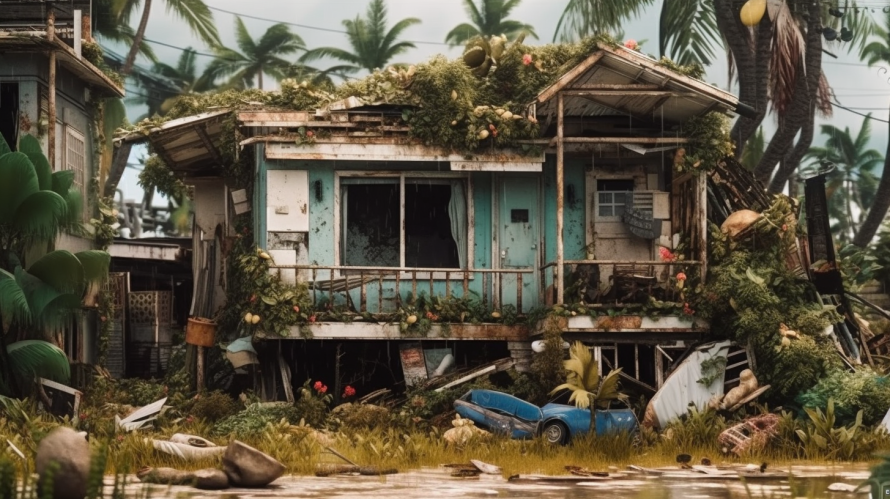
Tropical Cyclone Nivar hit the southeastern coast of India in November 2020, causing widespread damage and disrupting the lives of millions of people. The cyclone was categorized as a severe cyclonic storm, with wind speeds of up to 120 km/hour. In addition to the immediate impact on human lives, the cyclone also had a significant impact on the environment. This paper will explore the various ways in which Cyclone Nivar impacted the environment, including damage to forests, wildlife, and marine life.
Impact on Forests
One of the most significant environmental impacts of Cyclone Nivar was the damage caused to forests. The cyclone uprooted thousands of trees, leading to soil erosion and loss of habitat for wildlife. The loss of trees also means that the ability of forests to absorb carbon dioxide, a key greenhouse gas, is reduced. The damage to forests caused by Cyclone Nivar will have long-term consequences for the environment, as it can take many years for forests to regenerate.
Impact on Wildlife
The cyclone also had a significant impact on wildlife in the affected areas. Many animals were killed or injured due to falling trees, flooding, and habitat destruction. The loss of habitat caused by the cyclone will also have long-term effects on the ability of wildlife to survive and thrive. The destruction of habitats means that some species may be forced to migrate to other areas, which can lead to conflicts with other animals and human populations.
Impact on Marine Life
The cyclone had a significant impact on marine life, particularly in the coastal areas of Tamil Nadu and Puducherry. The storm surge caused by the cyclone led to flooding in the coastal areas, leading to the destruction of coral reefs, mangrove forests, and other marine habitats. The loss of these habitats can have long-term impacts on marine life, as they provide important breeding and feeding grounds for many species. The destruction of coral reefs is particularly concerning, as they are some of the most diverse ecosystems on the planet and are vital for the survival of many species.
Impact on Water Resources
The cyclone also had an impact on water resources in the affected areas. The heavy rainfall associated with the cyclone led to flooding in many areas, causing damage to infrastructure and homes. The floodwaters can also carry pollutants and contaminants, which can lead to water contamination. This can have serious health consequences for people and wildlife that depend on these water resources. Flooding can also lead to soil erosion, which can impact the quality of the soil and make it less productive.
Impact on Agriculture
The cyclone also had a significant impact on agriculture in the affected areas. The heavy rainfall and flooding destroyed crops, leading to food shortages and economic losses for farmers. The loss of crops also means that food prices may rise in the affected areas, leading to food insecurity for some populations. The damage caused to agricultural land by the cyclone can also have long-term effects on the ability of farmers to grow crops and provide for their families.
Recovery Efforts
In the aftermath of Cyclone Nivar, recovery efforts focused on restoring power and communication infrastructure, providing relief to affected populations, and clearing roads and other infrastructure. Efforts were also made to assess the damage to the environment and to begin the process of restoration. This included planting new trees, restoring damaged habitats, and providing support to farmers to help them recover from their losses.
Conclusion
The impact of Cyclone Nivar on the environment was significant, with damage to forests, wildlife, marine life, water resources, and agriculture. The cyclone highlights the vulnerability of ecosystems and populations to extreme weather events and the importance of taking action to mitigate and adapt to climate change. The recovery efforts in the aftermath of Cyclone Nivar provide an opportunity to build back better, with a focus on climate-resilient infrastructure and sustainable development practices.
Lessons learned from Cyclone Nivar can help inform future disaster preparedness and response efforts. In particular, it highlights the need for early warning systems and evacuation plans that take into account the unique needs and vulnerabilities of different communities. This includes ensuring that shelters are accessible to people with disabilities, the elderly, and other marginalized groups.
